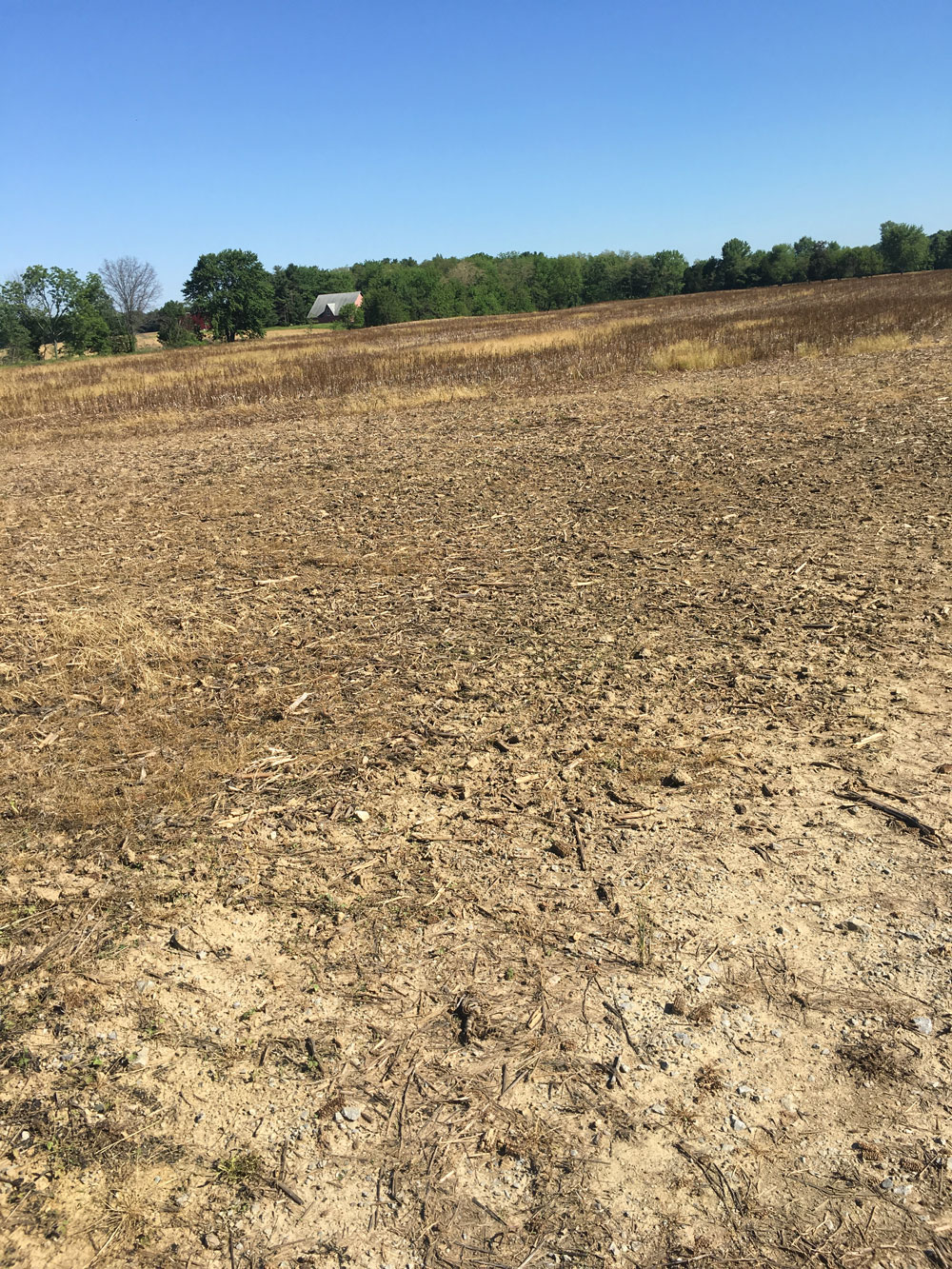We all value healthy, nutrient dense foods. But did you know that how this food is produced could also help mitigate global warming?
America’s industrial agriculture system has been very productive, but at a high environmental and health cost. We need a more holistic paradigm. Worldwide we have lost 50-70% of the organic matter from our soils, resulting in decreased fertility and water holding capacity. Soil depleted of carbon results in erosion and leaching with subsequent pollution of our streams, rivers and lakes. An 8,000 square mile dead zone exists in the Gulf of Mexico due to nutrient runoff into the Mississippi River. Toxic algae blooms occur in Lake Erie each summer for the same reason. There is a water crisis worldwide. This is the result of the loss of soil carbon with resultant dysfunction of the carbon and water cycles. Sustainability of such depleted top soils is no longer sufficient. We must rebuild our soils.
The single most important determinant of a healthy, fertile, biologically alive, and functioning top soil is organic matter. A living plant is the most efficient, cost effective way to add carbon to the soil. Through photosynthesis, this plant takes carbon dioxide from the atmosphere and puts the carbon into the soil in the form of sugars. Soil microorganisms use this sugar as an energy source and are able to store some of the carbon in the form of humus. Humus can remain stable in the soil for hundreds of years, thus sequestering carbon and increasing soil organic matter. A 1% increase in soil organic matter allows the soil to hold an additional one inch of rain, or 28,000 gallons of water per acre. You can think of it as a carbon sponge. This helps ameliorate floods, droughts, run off, and leaching, while at the same time removing carbon dioxide from the atmosphere. It also allows more plant growth, which cools the earth through transpiration.
Soybean fields that have been fallow since October of last year. This results in significant oxidation and loss of carbon from the soil. The resulting erosion present in one photo amounts to the loss of 5 tons of topsoil per acre. This could all be avoided by the use of cover crops.
Regenerative agriculture (also known as carbon farming) needs to be our new paradigm.
The tenets of regenerative agriculture are as follows:
Reduce tillage as tillage oxidizes carbon with the loss of organic matter
Keep soil surfaces covered at all times to protect them from heat, wind, and water erosio
Keep a living plant growing for as much of the year as possible by using cover crops. This maximizes photosynthesis, increases soil microorganisms, prevents erosion, and increases soil organic matter. Currently, our corn and soybean fields remain bare 6 months of the year. Cover crops are used on only 2% of farm acreage in USA.
Rotational grazing of livestock instead of the continuous grazing that is done on the majority of farms in the USA. Beef production in CAFO’s (confined animal feeding operations) contribute to greenhouse gas emissions. Several recent studies have demonstrated that grassfed beef production using rotational grazing is a net carbon sink.
“A mere 2% increase in the carbon content in the planet’s soils could offset 100% of all greenhouse gas emissions going into the atmosphere.”
“If all farmland sequestered more carbon than it was losing, atmospheric carbon dioxide levels would fall at the same time as farm productivity and watershed function improved.”
For a local example of what regenerative agricultural practices can do, look no further than White Clover Farm in Hillsboro, Ohio. White Clover Farm is a 300 acre family owned farm producing 100% grassfed beef. Certified by the American Grassfed Association. Cattle are raised on pasture from birth to slaughter, never receiving any grain, hormones, or antibiotics. The are slaughtered locally at Stehlin Brothers Meats and direct marketed to consumers.
We have been able to increase soil organic matter by 2% over 10 years through the use of rotational grazing of our cattle and the use of cover crops. The increase of soil organic matter results in better water infiltration and retention. This leads to 50% more biomass production as compared to continuous grazing. This also recharges the ground water and prevents runoff or leaching, protecting our watershed which ultimately runs into the Ohio River.
Cattle from White Clover Farm in Hillsboro, Ohio grazing a cover crop of Sorgum/Sudan Grass
Our planet’s future food and water security is dependent upon a well functioning carbon and water cycle. The first and most important step is to allow no bare ground. Keep it covered with a living plant for as much of the year as possible. We can create the future we desire by restoring carbon to our soils. Regenerative agriculture offers a pathway to this goal.
Dr. James Linne
I have been a practicing physician (gastroenterologist) for 35 years. I feel that our health care system spends too much time and resources treating disease as opposed to keeping people healthy. A healthy diet is the first and most important step in maintaining good health.
Healthy, nutrient dense food starts with healthy, fertile soil. I purchased White Clover Farm in 2005 with the intention of improving soil fertility and biodiversity. We were the recipient of the 2016 Highland Soil and Water Conservation District Outstanding Cooperator of the Year award. These healthy soils lead to healthy plants, which leads to healthy animals, which ultimately leads to healthy humans. It’s all connected.




